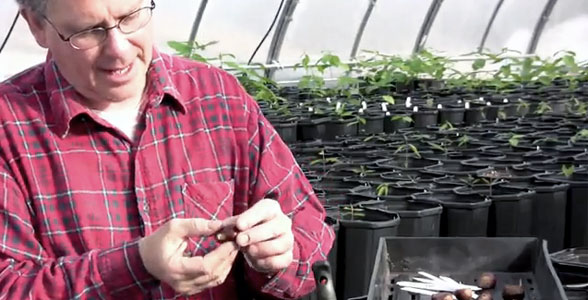Growing plants requires attention, dedication, and patience. But more than anything else, it requires the initial seed. The UT Chattanooga greenhouse now flourishes thanks to the seed provided by the Department of Ecology and Evolutionary Biology at UT Knoxville.
Joey Shaw, assistant professor of biological and environmental sciences, began working at UTC in 2005 and found the greenhouse in shambles.
“The greenhouse was being used as a storage shed. It had asbestos and fewer than five living plants. It took me a couple of years to renovate it because I had to literally start from scratch.”
Shaw received a grant from UTC to improve the greenhouse, but the collection lacked many tropical plant specimens. He wanted the greenhouse to serve as a learning tool for students and as a suitable teaching environment for professors.
Remembering his doctoral work at UT Knoxville and the vast array of plants held by the Fred Norris greenhouse, Shaw went to his former professor and friend Ken McFarland, lecturer in biology and organizer of the Wildflower Pilgrimage, to ask for help.
“He was very willing to help me stock the greenhouse,” Shaw says. “Greenhouses trade specimens like trading baseball cards, but we didn’t have anything to give to him. It was a truly generous act by him and his colleagues.”
Having been with UT Knoxville for more than 35 years, McFarland has been able to help many universities start their own greenhouse programs. The department has given plants to Appalachian State, Eastern Kentucky, and Austin Peay. McFarland also goes to Knoxville area elementary schools to do demonstrations and usually leaves a plant behind.
“It’s kind of a public service to local schools and universities,” says McFarland. “We enjoy showing kids how plants can influence their world.”
McFarland’s donation of 55 potted plants and many cuttings from other plants jump-started UTC’s program, which now benefits more than a hundred students each semester, as well as many faculty members who use the greenhouse for research and teaching.
“Ken is the primary reason the greenhouse looks green from the outside now,” Shaw says. “It allows us to have plants to show our students, which stimulates us as professors. Before, we had to get pictures online and project them. Now we have something tangible to show students. It makes classes more interactive and learning so much more interesting.”



